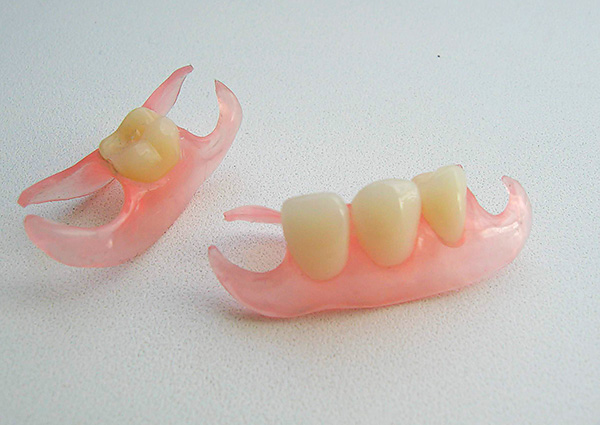
The so-called butterfly denture is a partial removable denture prosthesis. In turn, this means the following important design nuances:
- Partial - means that the prosthesis is used to replace small defects in the dentition (most often with the loss of one or two teeth);
- Removable - this means that the patient can quite easily remove the structure from the oral cavity (for example, to care for it);
- Immediate - that is, used immediately (lat. “Immediatus” means “direct”). In most cases, butterfly prostheses are used to replace extracted teeth directly on the day of surgery.
Now let's see why, in fact, this removable denture is called a “butterfly”.
Everything is extremely simple. The most popular variety of the prosthesis under consideration has a visual resemblance to a butterfly: the structural fastening elements (plastic clasps), like insect wings, cover adjacent teeth.
The following photos show classic examples of butterfly prostheses:


It is interesting
It should be noted that butterfly prostheses are not always similar to these same butterflies. Anyway, the name is trivial (not nomenclature), so the line between the "butterfly" and, say, the "caterpillar" is very arbitrary.
For example, if a large number of teeth has been removed, the implant prosthesis may look like this:
You must admit that he is not very similar to a butterfly anymore.
Is it possible to use a butterfly prosthesis for permanent prosthetics without resorting to dental implantation or installing a bridge?
This question becomes quite relevant for the patient when it turns out that the cost of manufacturing a butterfly prosthesis is on average about 10 times lower than the cost of installing a quality dental implant. Well, then we will consider in detail the service life of the structure, its advantages, as well as the disadvantages that prevent the use of a temporary prosthesis as a permanent one.
For those who do not want to go “without teeth” for several weeks
The sudden loss of any tooth (especially in the smile zone) can cause a strong emotional reaction, up to panic and prolonged stress. This is especially true of the loss of front teeth in those patients who, on duty, have to communicate with people every day - journalists, actors, teachers, doctors, etc. In some cases, we can even talk about a temporary cessation of professional activity with a concomitant decrease in a person’s financial income.

In such cases, butterfly prostheses come to the rescue.
As an example, we consider the classic situation that orthopedic dentists encounter quite often: a patient consults a prosthetist with complaints about the unsatisfactory condition of one or several teeth, and often come with existing dents in the dentition. Situations can be different: significant destruction of the crown of the teeth, their mobility, violation of the function of chewing and aesthetics due to the missing tooth, etc.
In many cases, problem teeth and their residues (roots) must be removed with subsequent prosthetics. And here the patient has a logical question: how long does it take to walk with a “hole” in the dentition until the prosthesis is ready?
On a note
In budgetary clinics, the situation in this regard, as a rule, is far from rosy: it can be a couple of weeks or several months.It is clear that not everyone is ready to endure in anticipation of the restoration of a normal smile for so long, even for the sake of saving money (especially if you take into account that sometimes such savings go sideways to health - more on that below).
That is why for those people who do not want to go without teeth for several weeks, the technique of indirect prosthetics was invented. Modern butterfly dentures (and other implant versions of dentures) allow you to immediately replace them with an aesthetic denture when removing 1, 2 or even more teeth.

Today, dentists who care about the patient’s physical and mental state work according to the principle: “came with teeth - left with them,” and for this there are various options for artificial dentures in general and butterfly prostheses in particular.
The device of prosthetic butterflies and their varieties
As noted above, a removable butterfly prosthesis got its name due to its external resemblance to a butterfly - a characteristic feature of the design is the presence of plastic hooks (clasps) with which the prosthesis is held on the abutment teeth. As you understand, the supporting teeth must be in good condition in order to be able to take on the additional burden.

On a note
An important advantage of butterfly prostheses is the absence of the need to prepare supporting teeth for crowns, that is, they do not need to be turned with a drill.
The basis of the prosthesis is a plastic base, in which, as a rule, 1-2 teeth are attached. By the way, the teeth are also made of plastic.
The plastic for the manufacture of the base and hooks has a pink color - the color of the gum. Depending on which plastic is used, butterfly prostheses are divided into:
- Acrylic
- Nylon (for example, the so-called Quadrotti prostheses).
Nylon prostheses are positioned as more modern and comfortable: soft elastic nylon irritates the mucous membranes less and causes allergic reactions less often (but nylon butterfly prostheses are also more expensive at a price). Acrylic construction is rigid, often leads to discomfort and more often causes allergic reactions.
Photo of a nylon butterfly prosthesis:

On a note
The Quattro Ti nylon butterfly prostheses are lighter than similar standard acrylic plastic designs. In addition, due to the elasticity of nylon, the prosthesis does not break when dropped (as practice shows, older people often drop prostheses, breaking them, and repairing can often cost several thousand rubles).
The number of teeth fixed in the prosthesis may be different: more often it is 1-2 teeth, but there may be more. At the same time, it is already difficult to call the prosthesis a “butterfly”:

In fact, with an increase in the number of prosthetic teeth, the butterfly prosthesis is “transformed” into the so-called clasp prosthesis with clasps (German: “bugel” means “arc”):
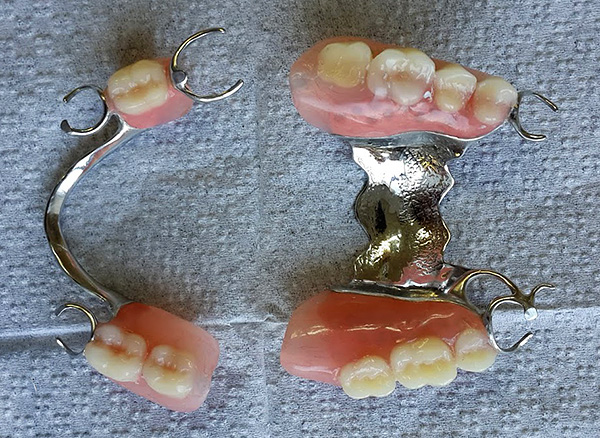
Feedback
“Recently I had a small stroke, so they refused to put an implant right away, and they recommended walking with a temporary prosthesis with a butterfly for a couple of months. Made instead of the front tooth. The first week it was difficult to bite off something, but then got used to it, it became quite tolerable. Plastic hooks allow you to remove and wear it when required. I must say right away that he requires no less care than his teeth, even more. But it looks like a native tooth, and many can’t even find it right away ... "
Oleg, 55 years old, Moscow
Is it possible to do without temporary prosthetics?
Despite the fact that the butterfly prosthesis allows you to minimize the aesthetic and functional imperfections that appear after tooth extraction, the most economical patients often try to evade temporary prosthetics, so to speak, considering it a banal deception of money.
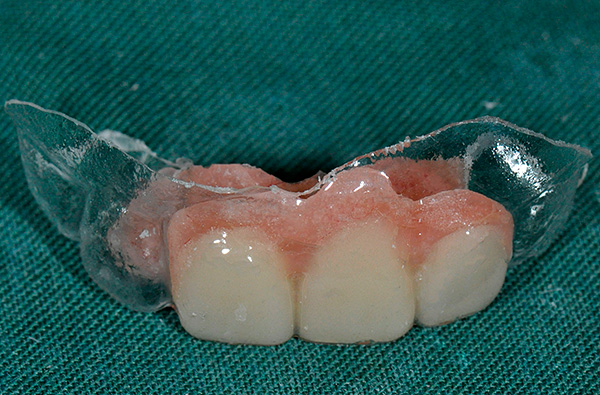
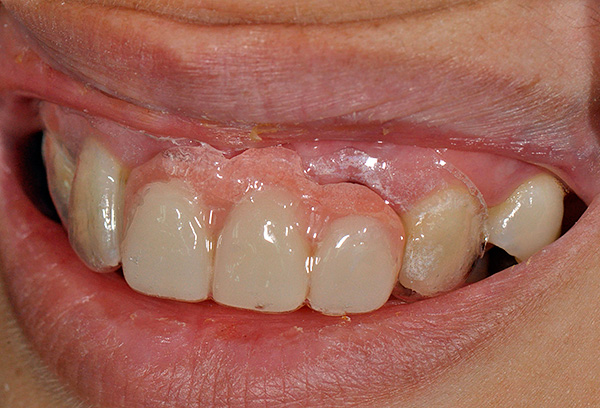
However, it should be borne in mind that the artificial dentures provide not only the restoration of the aesthetics of the dentition and the usual way of life, but also protect neighboring teeth from displacement.And even these very important points are only part of those “utilities” that give their owners temporary butterfly prostheses.
Let's see what happens in practice after removing even 1 tooth - this will help to better understand the importance of temporary prosthetics.
Here is a simple example: the patient realized the need to remove the roots of the teeth, the edges of which regularly injured the mucous membrane of the cheeks. After removing the annoying 3 teeth, he, of course, felt the need to “have a prosthesis” - well, somewhere in a year or two, as it was then that, perhaps, the financial situation would become more comfortable.
And everything would be fine, but after half a year our hero notices that the teeth began to lean towards the gaping voids of the dentition. Moreover, on the opposite jaw, the teeth opposite the voids began to significantly move out of the hole (as if to grow).
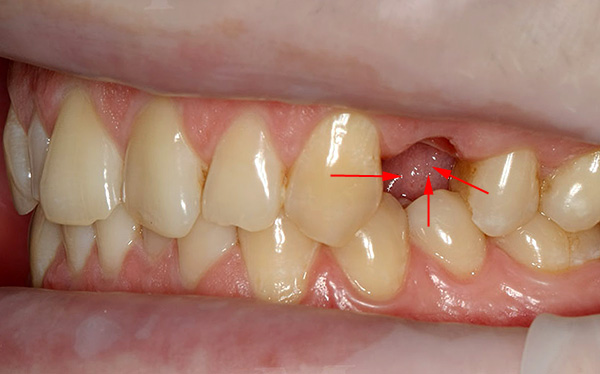
After a couple of months, the patient loses the seal, although nothing seemed to portend such a disaster. Turns to the dentist. When asked by the doctor whether the patient will “insert” teeth, our hero replies that someday he will definitely do it. As a result, the dentist, seeing the absence of teeth and in the expectation that dentures will nevertheless appear in their place, makes the filling lower in height than it should be.
After another couple of weeks, another filling falls out, which is in the active bite area, and then everything follows the classical scenario: due to overload, strongly inclined teeth adjacent to the defect become mobile (in other words, they begin to stagger).
What is the biggest mistake here? The patient made the right decision that he would replace the lost teeth with a prosthesis. The problem is that the planned treatment was, to put it mildly, greatly delayed, and this managed to lead to completely natural undesirable consequences. Although this could be easily avoided if you smoothly move towards the goal according to the treatment plan outlined by the orthopedist, which may include, for example, temporary use of the same butterfly prostheses.
In a case such as prosthetics, selective neglect of individual recommendations of an orthopedic dentist often leads to poor results. Temporary prosthetics with artificial dentures gives time for comfortable healing of the holes after tooth extraction (while the prosthetic bed is being prepared) and provides prevention of unwanted occlusion changes due to tooth displacement.

It is interesting
The classical method of dental implantation involves delayed prosthetics: first, the gums must heal and bone tissue forms after tooth extraction. Then it usually takes a few more months for the full osseointegration of the implant to take place, that is, for the implant to fuse with the bone. And a butterfly prosthesis in that case would come in handy, allowing the patient to smile normally, chew food and not be afraid of tooth dislocation.
The possibilities of butterfly dentures and what problems they will save you from
That is, as you already understood, it is highly undesirable to do without prosthetics of missing teeth for a long time, since this promises problems - and the further, the problems are more pronounced.

So, let's summarize the problems that can be avoided with removable butterfly dentures. Distribute them in order of occurrence in the practice of the dentist:
- Displacement of teeth towards the defect. The angle of inclination depends on individual characteristics. The displacement of the teeth is stretched over time, and progresses faster with a large number of extracted teeth, an initial malocclusion and chewing of food mainly on one side;
- Extension of the antagonist tooth (on the opposite jaw) towards the defect. The tooth, having lost its antagonist, begins to shift towards the healing gum. Some patients note that the tooth seemed to “grow”.Indeed, he is advanced from the hole, as he does not receive sufficient chewing load. Using a butterfly prosthesis allows you to maintain a normal chewing load on the antagonist tooth;
- Overload of the remaining teeth and their increased abrasion. The absence of certain teeth causes a reformation of the so-called functioning groups of teeth in the mouth, which take the brunt of chewing food. “Impact” can be considered, both literally and figuratively - from knocking out fillings to erasing enamel of tubercles of chewing teeth and cutting edges of the frontal group;
- Overload of TMJ (temporomandibular joint). Since after the removal of teeth from the bite-holding group, the entire dentition is restructured, this often affects the function of the TMJ. Its deformation is not immediately noticeable, but then there may appear a crunch, clicking, difficulty opening the mouth, pain, a constant feeling of discomfort, etc. Butterfly denture, despite the fact that it is removable and does not have to be worn constantly, effectively prevents these undesirable consequences;
- Violation of the tone of the masticatory muscles and a decrease in masticatory effectiveness. Simply put, chunks of food fly whole in the stomach. That is, without prosthetics, the patient runs the risk of gastrointestinal problems (which are, generally speaking, a very frequent consequence of mastication due to prolonged absence of teeth).
As you can see, in functional terms, even the most inexpensive butterfly prosthesis could protect against many potential problems during the period from tooth extraction to permanent prosthetics.
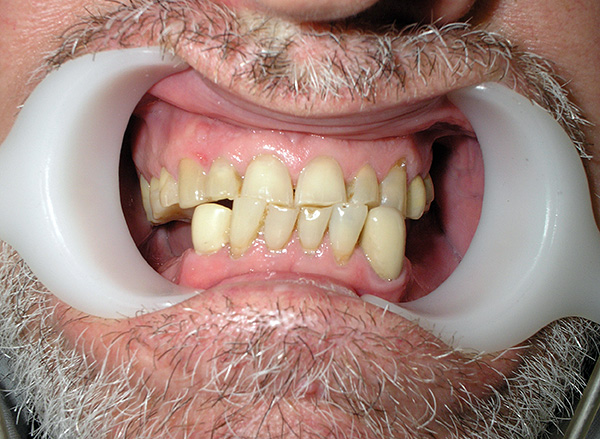
Question: Should I remove a prosthetic butterfly for the night?
With regular care of the prosthesis with a toothbrush and toothpaste (and subject to normal healing of the socket in place of the extracted tooth), there is no need to remove the prosthesis for a long time, you can wear it almost constantly.
It is impossible not to say about problems of a psychological nature, when the front teeth are lost, for example, due to mechanical injury. It is often not possible to carry out permanent prosthetics in a couple of days, but meanwhile, a person needs to make up for a cosmetic defect as soon as possible. Failure to do this quickly can be fraught with a variety of negative consequences: from panic and stress to suicidal moods.
Temporary prosthetics using a fast-made butterfly prosthesis for a patient can become a real life buoy in a seemingly hopeless situation. Actually, this is the essence of implant prosthetics (aesthetics and chewing function are restored immediately). With a competent approach, the prosthesis will be almost invisible and indistinguishable from natural teeth.

The photo below shows the condition of the dentition before and after prosthetics using the intermediary of a butterfly prosthesis:


It is interesting
Since the implant prosthesis itself is immediate, that is, carried out immediately after the extraction of the tooth or its residues, in this context the butterfly prosthesis also performs a protective function, protecting the blood clot from external influences (for example, from damage by pieces of food). Thus, temporary prosthetics helps to accelerate the regeneration of the tissue of the hole and helps to reduce the risk of developing alveolitis - inflammation of the hole.
Some design flaws and ways to overcome them
If we analyze the patient reviews of the butterfly prosthesis, we can make the following list of the most frequently observed design flaws:
- Fragility. The fact is that the design of a temporary prosthesis does not initially involve its use for several years.The butterfly denture is designed for a period of use of about 2-3 months, after which, ideally, a permanent prosthesis should be performed (however, as they say, there is nothing more permanent than temporary - some patients use the prosthesis for several years);
- Insufficient fastening of the prosthesis (flies when chewing). It should be noted that a well-made prosthetic butterfly in the vast majority of cases rests on the abutment teeth very reliably, and if you do not bite nuts and do not chew toffee, then “pulling” it from the abutment teeth is very problematic when chewing. If the prosthesis is made with inaccuracies and does not hold fast - this is an overcome situation, and correction of the prosthesis in the dental clinic most often solves this problem;

- The fragility of the prosthesis. This applies, first of all, to butterfly prostheses made of acrylic plastic (nylon ones are elastic). Clammer hooks often break. Well, in the presence of a denture it is really important to control the diet, avoid hard foods and eliminate bad habits (bite strings, nails, husk seeds, etc.). And also try not to drop the prosthesis.
On a note
In order to extend the life of a removable denture prosthesis and avoid problems at the stage of temporary prosthetics, it is important to provide competent maintenance of the structure. So, for example, a prosthetic butterfly must be removed regularly after eating, washed and cleaned of food debris. This is done with an ordinary toothbrush and toothpaste.
If there is a desire to remove the prosthesis for a long time, then it is desirable to store it in a special liquid for storing dentures.
- Lack of aesthetics (the tooth does not look like its own, or the basis and clasps of the prosthesis are too noticeable with a smile). The leading importance here is how well the prosthetic butterfly was made and what materials were used. Expensive and high-quality materials, combined with the skill of a doctor, almost always work wonders, and a temporary prosthesis can be difficult to distinguish from natural teeth. Of course, the price in this case will be higher. Below are photos before and after and prosthetics using a butterfly prosthesis:



- Inconvenience when wearing. Sometimes there are problems with diction and constant discomfort in the oral cavity. These problems are quite common, and each patient is expressed individually - from a weak degree of severity to a very significant one.
Feedback:
“Due to periodontal disease, I had to gradually remove all the teeth on the lower jaw. For some time I went with a partial denture, a butterfly. It was made of acrylic. It was hell, I couldn’t get used to it. Then the second portion of the teeth was removed, put a nylon prosthesis, passed with him for 1.5 years. Now it was the turn to remove the remaining teeth. I feel disabled ... "
Elena, Moscow
And one more tip:
“If there is a gag reflex and is initially disgustingly held, then go to the alteration. This means that the prosthesis is poorly fitted, the problem will not disappear, and then it will only get worse. I went through this with my first prosthesis butterfly, there was a constant gag reflex and initially champed. It was impossible to walk with him ... "
Oksana, Yekaterinburg
Speaking about the disadvantages of butterfly prostheses, it is necessary to note one important point, to which a large number of patients do not pay much attention at all. We are talking about the fact that a butterfly denture is, first of all, a temporary denture that is not able to fully replace a lost tooth.
The butterfly prosthesis, unlike the implant, does not fully ensure the transfer of chewing load on the bone tissue of the jaw in the area of the extracted tooth, as a result of which the bone will gradually atrophy here. That is, if you decide to wear a temporary denture as a permanent, then you will have to regularly adjust it, since the prosthetic bed (gum) will gradually sag.
With a large number of extracted teeth, gradual atrophy of the jaw bone leads to a characteristic (senile) change in facial features.
Stages of manufacturing a butterfly denture
Two specialists take part in the creation of the prosthesis: an orthopedic dentist and a dental technician. As noted above, acrylic plastic (including Acry-Free acrylic resins rarely causing allergies) and nylon (including plastic based on Dental-D nylon) can be used as the main materials.

The manufacture of a butterfly prosthesis takes place in several stages. Here is a brief example diagram:
- Inspection of the oral cavity. At this stage, the orthopedic dentist together with the patient draw up a plan for the upcoming treatment. In particular, they agree on the features of implant prosthetics - from the material and form of construction to the terms of wearing and the frequency of correction of the prosthesis;
- Impression (impression), which allows you to get a negative image from the jaw. This stage is performed before tooth extraction - in this case, the accuracy of the work will be higher than when the impression is taken with already missing teeth (then you have to take a picture and use it to model the missing teeth when making the prosthesis);
- Making a denture in an acrylic or nylon prosthesis in a laboratory;
- Trying in the finished design in the patient’s oral cavity (after removing the problem teeth) and correcting the prosthesis, if necessary.
How much are butterflies today: indicative prices
Of course, the status of the clinic, the level of specialist qualification, and sometimes the region of residence also affect the final price of a butterfly prosthesis (and in general, any dental service). Therefore, we will further discuss the average market prices.

In addition, when assessing the financial costs of prosthetics, it is also necessary to take into account the number of prosthetics (1, 2, 3 or more), since each missing tooth contributes to the cost of materials and work. That is, the price of one tooth will be a kind of reference point.
On a note
A significant role in the final cost of the work is played by the material of construction. The cheapest ones are butterfly prostheses made from ordinary acrylic plastic, while the more expensive ones are made from nylon. The difference in price fully reflects the difference in the aesthetic and functional properties of the artificial dentures. That is, the “cooler” it looks and more convenient to use, the less money will remain in the wallet.
In Moscow, the price of a butterfly prosthesis for one tooth can vary from 15 to 40 thousand rubles, and in the regions - from 5 to 25 thousand.
If you have personal experience with using a butterfly denture, be sure to share it by leaving your review at the bottom of this page (in the comments box).
Useful Video on the Pros and Cons of Removable Nylon Dentures
How reliable are removable dentures and what types of them are


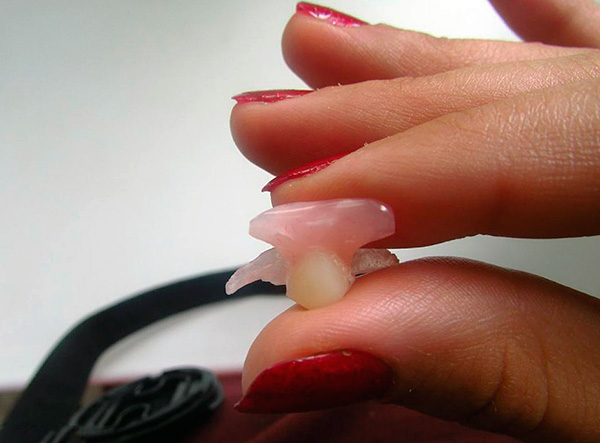



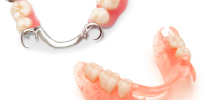


I have been wearing a butterfly for 5 years instead of a missing tooth in the upper jaw. When I eat, I take it off. I work as a teacher, and no one realizes that there is no tooth! I recommend everyone than to remove the enamel and put a bridge or implant! Now I want to put on the missing root!
Is it really possible to get used to a butterfly? Put today, unusual, I want to remove! I feel it all the time!
Yes really. Discomfort was only the first three days, even a headache and excessive saliva stood out. And I have been wearing it for almost 8 years, very pleased, on top of 2 butterflies of 2 teeth, it’s convenient to chew.
An important role is played by the implant placement site. In the upper jaw, it’s probably really getting used to, but in the lower jaw it is problematic. I've been feeling it for 1 month now. I have a nylon butterfly, large in size, on the lower chewing tooth. When I do not chew - everything is fine, I just feel a little something foreign in my mouth. But when I chew, it is very unpleasant.
How much did the tooth cost you?
I’ve been going with a plate for about 10 years. Everything is fine)
I have been wearing a “butterfly” for 5 years! On the lower jaw, 3 teeth. I am happy with everything. One thing is bad - some dark spot appeared inside.
Put the butterfly on the top five a week ago. I don’t feel much discomfort, although there is a feeling that the caramel in the mouth (or chewing gum) has stuck to the gum. Sometimes I hear a violation in the pronunciation of hissing sounds. The main inconvenience - already flew 2 times with food (ordinary food, not nuts or toffee). When it flies, there is a risk of cracking it, or even worse, choking on it.
Another unpleasant nuance - the tooth has an inferior size. That is, on the outside it corresponds in size, but in width 2 times already removed. Thus, the load when chewing on the gum and on the pair of teeth in the lower jaw is uneven. The doctor said that the tooth is not made in size, but only clasps. I don’t know whether to believe it or not. I would like to clarify, is this so? Correctly necessary, otherwise it will fall out.
Hello, Tatyana. “Butterfly” is a temporary construction, that is, a prosthesis that replaces only an aesthetic defect. For full chewing, it is not intended at all. Therefore, the size of the chewing surface is minimal. Typically, such a prosthesis is removed from the bite, that is, it is not involved in chewing food. But the fixation of such a prosthesis can and should be improved. Consult your orthopedic surgeon and talk about the inconvenience - the defects of the prosthesis can be corrected.
Good afternoon! All the amenities and inconveniences depend on the dental technician and on how correctly the impression was taken. The first prosthesis that I was placed a week ago pressed very hard (butterfly prosthesis made of nylon, tooth 6). Grind, cut, it became convenient. But it turned out that a lot was removed - the prosthesis began to fly off. Went away with him for a week, got used to it. Made a new, convenient. Yesterday, when dressed, I wanted to take it off. They put it in the evening, the doctor asked me to inconvenience a little. In the morning I woke up - and almost forgot that there is a prosthesis. While chewing, it presses a little and I feel the plate with my tongue, but comfortable. I hope that I will wear it for a long time) The doctor dissuaded me from the implant.
Why is the doctor dissuaded from the implant?
The doctor also dissuaded me from the implant. Since the lower tooth, both large and instead of one removed, you need to put 2 implants. But one butterfly, and if you put a quality one, you can use it constantly. Customized for a long time, but now I go - everything is fine.
Good afternoon! I have been wearing a butterfly on the top four for several years. Satisfied, completely unnoticed. I take off at night when I brush my teeth. The implant did not dare to deliver, given the problems arising from them from friends.
I have been wearing a butterfly for 10 years. I am ashamed to admit, but I never take off, only for brushing my teeth. That is, I eat and sleep in it. There is no discomfort.
Hello. I read that the installation of a butterfly prosthesis is recommended before implantation, as it helps to grow atrophied bones. Is this really so? Is it suitable in my clinical case: on the lower jaw there is no 6 years old, 5 - healthy, 7 - treated with a stump tab, on it a temporary plastic crown (and the tooth is inclined towards the missing tooth). There is a CBCT. Implantologists are ready to place an implant. But I understand that the bone and gums are no longer of the required size. Thanks!
Hello Svetlana. Bone tissue from wearing a “butterfly” does not grow. And if you wear a long period, then most likely you will need plastic soft and hard tissues. Regarding 7 matches - you need to look in the oral cavity. If the implantologist is ready to install the implant, it means that the tilt of the seven does not interfere, and there is enough space.
I wanted to know if there are any adhesives for fixing the butterfly prosthesis?
Hello, Asya. Usually glue for prostheses CORES is well suited. However, if the prosthesis does not hold at all (even at rest), then it is necessary to consult a specialist to correct the prosthesis.
She placed a butterfly prosthesis instead of her front tooth a couple of days ago. It doesn’t interfere, but there is discomfort - I take off cleaning, the impression of how the shoes pressed, and about happiness ...
Hello, is it necessary to remove a prosthetic butterfly during natural birth?
Hello, Natalia. Yes, you definitely need to remove it, since you can swallow it, break it and, in addition, injure the soft tissues of the oral cavity with it.